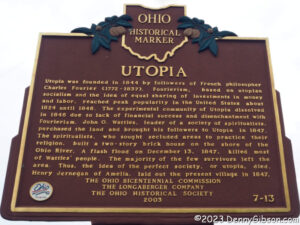 Wednesday is this blog’s day for reviews. Although not every Wednesday gets one, reviews do sometimes appear two or more weeks in a row. In fact, reviews appeared on six consecutive Wednesdays earlier this year. But today is definitely the first time I have ever published back-to-back reviews of premieres of locally produced musicals about local history. In addition to their being musicals with local roots and having me in the audience of their inaugural runs, both Above the Sand (reviewed here) and Utopia, Ohio, the subject of this review, convincingly demonstrate the phenomenal amount of talent in this area. The similarities between the debuts of these two new musicals are striking but there are some pretty big differences between the musicals themselves.
Wednesday is this blog’s day for reviews. Although not every Wednesday gets one, reviews do sometimes appear two or more weeks in a row. In fact, reviews appeared on six consecutive Wednesdays earlier this year. But today is definitely the first time I have ever published back-to-back reviews of premieres of locally produced musicals about local history. In addition to their being musicals with local roots and having me in the audience of their inaugural runs, both Above the Sand (reviewed here) and Utopia, Ohio, the subject of this review, convincingly demonstrate the phenomenal amount of talent in this area. The similarities between the debuts of these two new musicals are striking but there are some pretty big differences between the musicals themselves.
One difference of note is the public’s familiarity with the two subjects. Virtually everyone knows that the Wright brothers were the first humans to successfully fly a heavier-than-air machine, and many residents of southwest Ohio know a lot more of the story than that. But the story of Utopia, an unincorporated community near Cincinnati, is hardly known at all. My guess is that even people who live fairly close to the small cluster of buildings on the banks of the Ohio River know little or nothing beyond what is written on the historical marker in the opening photo and not many stop to read even that.
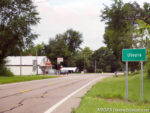 Utopia was actually the name of the third and final attempt at communal living at the location. The Clermont Phalanx was first. A “phalanx” was a group of followers of the writings of Charles Fourier. The Clermont Phalanx was formed in 1844 and failed in 1846. Within months of that failure, abolitionist and spiritualist John Wattles established the community of Excelsior on a portion of the phalanx property, and Josiah Warren, “America’s first anarchist”, established Utopia a short time later on another portion. A very good history of all three is available here. Joshua Steele, the writer of Utopia, Ohio, provided a nice summary in a Facebook post here.
Utopia was actually the name of the third and final attempt at communal living at the location. The Clermont Phalanx was first. A “phalanx” was a group of followers of the writings of Charles Fourier. The Clermont Phalanx was formed in 1844 and failed in 1846. Within months of that failure, abolitionist and spiritualist John Wattles established the community of Excelsior on a portion of the phalanx property, and Josiah Warren, “America’s first anarchist”, established Utopia a short time later on another portion. A very good history of all three is available here. Joshua Steele, the writer of Utopia, Ohio, provided a nice summary in a Facebook post here.
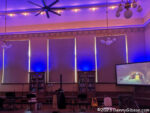 I’ve brought up all of this background stuff because I believe a decent knowledge of the history is necessary to understand the musical. Notice I said “understand” not “enjoy”. Enjoying the musical is easy because the music and performances are so good. In fact, knowing nothing at all about the history would not keep you from enjoying the music. You can appreciate the tunes the same way you appreciate a concert or a new album. All five cast members are talented vocalists. There is no orchestra. Every cast member plays at least one instrument and some play several. The full battery includes guitar, mandolin, piano, accordion, violin, and cajon. Coordinating instruments no doubt complicated the director’s and stage manager’s jobs but it was handled quite well.
I’ve brought up all of this background stuff because I believe a decent knowledge of the history is necessary to understand the musical. Notice I said “understand” not “enjoy”. Enjoying the musical is easy because the music and performances are so good. In fact, knowing nothing at all about the history would not keep you from enjoying the music. You can appreciate the tunes the same way you appreciate a concert or a new album. All five cast members are talented vocalists. There is no orchestra. Every cast member plays at least one instrument and some play several. The full battery includes guitar, mandolin, piano, accordion, violin, and cajon. Coordinating instruments no doubt complicated the director’s and stage manager’s jobs but it was handled quite well.
Coordinating hats also added some complexity. With more roles than actors, hats were used effectively to distinguish specific roles. Linsey Rogers and. Brad Myers were particularly adept at this. At times, images projected at the side of the stage also helped know who was who.
Determining when was when was a different matter. You might be able to tell the players without a program but not the dates. The songs of Utopia, Ohio do not tell a story chronologically, at least not in the order they were performed on Thursday. That is why, I assume, there are dates in the program. It took me way too long to realize this. Once I did, I started taking in the performance more as a concert than a play despite having a pretty good sense of the history of the three failed communities. In the end, I decided that viewing it as a series of related but not ordered musical vignettes was best. Within each vignette, the cast skillfully brought music, lyrics, actions, and expressions together to tell the intended story and to entertain as well.
A very important difference between last week’s review and this one is the fact that Utopia, Ohio‘s first run is not already over. This is being published on the morning of the second of four scheduled performances so I do not feel the too-late-to-matter guilt I did last week. Maybe I will, though, as at least one of the three remaining performances is sold out. Check for tickets here. If you do snag one, my advice is to either pay close attention to the dates in the program and put the history together in your head or ignore them completely and just tap your toes to some fine music.
 The Cincinnati Museum Center has presented a 1940s Day or Weekend annually since 2011. I attended the third in 2013. Saturday was their first-ever 1950s Day. Asked on their Facebook page if this would also be an annual event, the museum said no. It is intended to be a one-time thing to mate up with the ongoing Julia Child and Barbie exhibits. “But,” they added, “it could come back!” I don’t really remember the 1940s, but I do remember the 1950s, and the rain on Saturday looked just like rain did when Ike was in the White House and Waite Hoyt was on the radio.
The Cincinnati Museum Center has presented a 1940s Day or Weekend annually since 2011. I attended the third in 2013. Saturday was their first-ever 1950s Day. Asked on their Facebook page if this would also be an annual event, the museum said no. It is intended to be a one-time thing to mate up with the ongoing Julia Child and Barbie exhibits. “But,” they added, “it could come back!” I don’t really remember the 1940s, but I do remember the 1950s, and the rain on Saturday looked just like rain did when Ike was in the White House and Waite Hoyt was on the radio.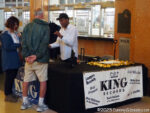

 Individual information tables lined the rotunda. Pictured are King Records Legacy, Casablanca Vintage Clothing, and the American Sign Museum with a genuine 1950 NEON SIGN.
Individual information tables lined the rotunda. Pictured are King Records Legacy, Casablanca Vintage Clothing, and the American Sign Museum with a genuine 1950 NEON SIGN. I stepped into the Newsreel Theater intending to watch a few minutes of the Moving Images presentation and ended up staying more than an hour watching clips of “Melody Showcase”, “Midwestern Hayride”, and commercials. I don’t remember “Melody Showcase”, but “Midwestern Hayride” was a staple at our house, and it’s even possible that I saw some of what I saw today when it was broadcast live.
I stepped into the Newsreel Theater intending to watch a few minutes of the Moving Images presentation and ended up staying more than an hour watching clips of “Melody Showcase”, “Midwestern Hayride”, and commercials. I don’t remember “Melody Showcase”, but “Midwestern Hayride” was a staple at our house, and it’s even possible that I saw some of what I saw today when it was broadcast live.
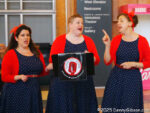
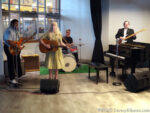 1950s Day included quite a bit of live music. I caught the P&G Big Band, the Queen City Sisters, and Naomi Carman and the Bluecreek Boys. I do intend to check out the Barbie and Julia Child exhibits sometime, but the museum was far too crowded for that on Saturday. I’ll slip them in on a weekday when school’s in session and employed people are doing employee things.
1950s Day included quite a bit of live music. I caught the P&G Big Band, the Queen City Sisters, and Naomi Carman and the Bluecreek Boys. I do intend to check out the Barbie and Julia Child exhibits sometime, but the museum was far too crowded for that on Saturday. I’ll slip them in on a weekday when school’s in session and employed people are doing employee things. 
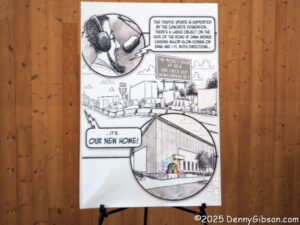


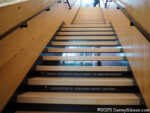


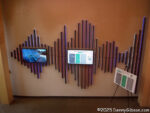






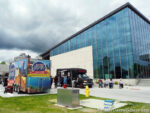
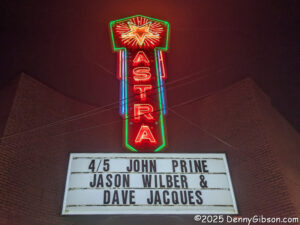
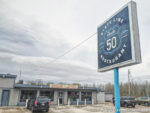

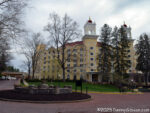






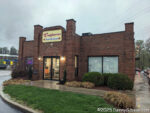



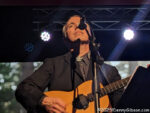
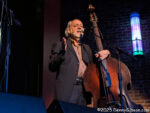




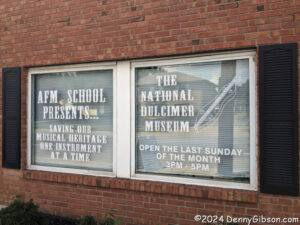
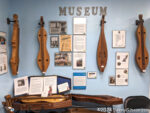
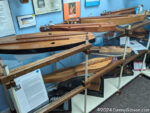
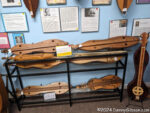
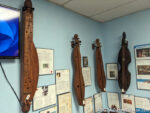

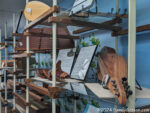
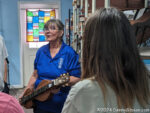

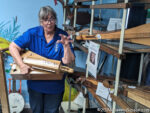



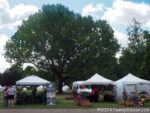


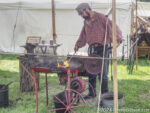

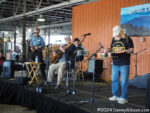
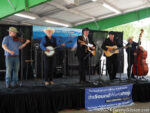
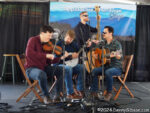

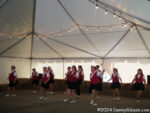
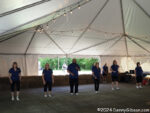




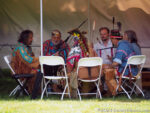


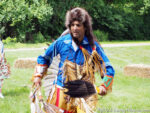
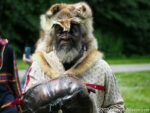


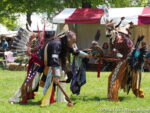
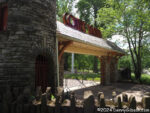

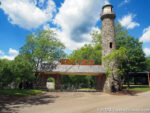

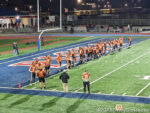
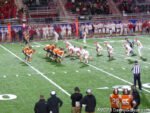
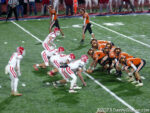


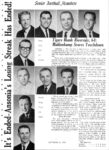

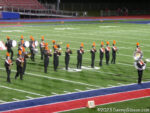
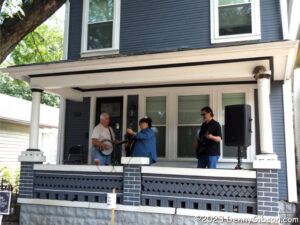
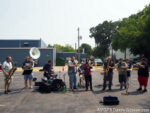
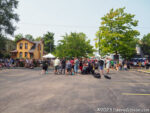
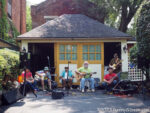
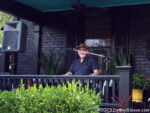
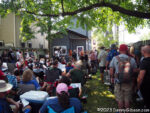
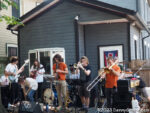
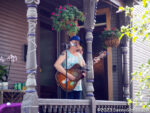

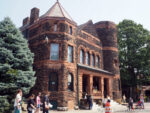
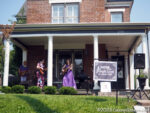


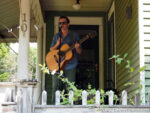



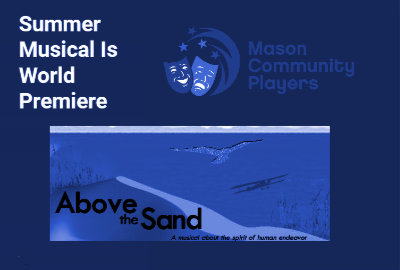 When I wrote about
When I wrote about 